Do you know about the trail that links the East Bay Regional Parks? Have you run it? If so, what is/are the best section(s)?
- Fellow East Bay runner (and now marathoner) Jen
They were mighty fine questions, this troika staring up at me from Jen’s email. Seemingly simple and straightforward each of them, but for one not-so-small snag:
I had no answers.
As a trail runner living in the East Bay, I should have had answers. I should have been able to rattle off the logistics of the trail system that links the East Bay, a trail system comprising the (sometimes) separate but (sometimes) equal East Bay Skyline National Trail and Bay Area Ridge Trail. But I couldn’t.

Click here for more information and a larger version of this map
So like any ignorant person not resigned to their ignorant fate, I set out to learn more about each trail. Of course my first resource was the interwebs, where I quickly learned the Bay Area Ridge Trail is a still-under-construction, multi-use trail that after completion will span 550+ miles and encircle the Bay “offering easy access to the San Francisco Bay Area’s renowned beauty.” It currently covers (discontinuously) over 335 scenic miles while crossing diverse landscapes. A significant chunk of that mileage passes through my neck of the woods in the East Bay, including stretches such as Nimitz Way that I run with regularity.
Similarly to the Bay Area Ridge Trail, colorful identifiers – in this case a patriotic red white and blue “USA” logo – guide the way along the East Bay Skyline National (Skyline) Trail. But despite frequent references to its 31-mile length on personal blogs and Regional Parks websites, the Skyline Trail remains somewhat more mystical in that it lacks (to my knowledge) an official website. So if I wanted to dissect and better understand all 31 miles of the Skyline Trail, I’d have to do it by piecing together the available online maps. But although having a cohesive East Bay trail map would answer a lot of questions, it wouldn’t answer them all… for that I’d have to push back from the laptop and hit the trails on foot. A dirty job to be sure, but some lucky soul one had to do it.
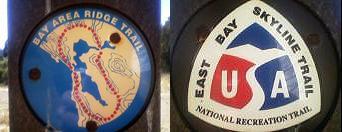
Keep an eye out for these familiar faces along the course
I should mention that use of the singular term “trail” in this case is grossly misleading. Each of these trail systems consists of a series of shorter spliced-together, in some cases blink-and-you’ll-miss-’em subtrails. Certainly the whole of each Trail is greater than the sum of its dusty parts. But as it turns out, stringing together the Skyline Trail and the Bay Area Ridge Trail in their entirety can be a mental and (even more so) physical challenge.
Katie and I pored over the online catalog of Regional Parks maps. We charted the tortuous path taken by each of the two major Trail systems. And ultimately we concluded that along its 31-mile length, the Skyline Trail almost entirely overlaps the Bay Area Ridge Trail, with slight divergences in Wildcat Canyon Regional Park (where the Skyline Trail begins) and Redwood Regional Park. Pretty straightforward, actually. So in effect I’d be running both Trails simultaneously. Not that this mattered, because my objective wasn’t to rigorously follow either Trail, but rather to map – subtrail by subtrail – one continuous and direct route from Wildcat Canyon to Lake Chabot, regardless of Trail affiliation. As it happens, the Skyline/Bay Area Ridge Trail offers the shortest distance (on trails, of course) between these two points.
So my route starts at the East Bay Waldorf School in El Sobrante, just north of Wildcat Canyon Regional, before intersecting both the Skyline Trail and Bay Area Ridge Trail at different points along Nimitz Way. It then follows the Bay Area Ridge Trail (and largely the Skyline Trail) the rest of the way, finishing at the Proctor Staging Area in Anthony Chabot Regional Park, just north of the Lake Chabot Marina. This route should be a useful resource for Bay Area trail runners: a hilly 32-mile course on challenging yet fully runnable trails, over variably technical terrain and with plenty of narrow singletrack.
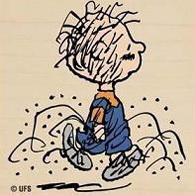
East Bay trails, here I come!
(photo credit: 123stitch.com)
Most of this course does belong to the Bay Area Ridge Trail; however, not all subtrails along the actual course are well labeled. And from running on multi-tentacled East Bay trails without a map or a clue, I’ve learned the hard way there’s more than one way to skin (or at least exhaust) a runner. So I’ve documented my route below, trail by trail. I’d recommend as handy online references the Bay Area Ridge Trail website, as well as the individual East Bay Regional Parks websites. Google Maps too can be useful, but as I note at several points in my narrative, I wouldn’t bet my last six ounces of water on it.
Something else to be aware of: dogs are allowed off-leash in the East Bay Regional Parks. And though this doesn’t necessarily pose a threat to runners (I’ve yet to see fangs), it’s pretty irritating when a curious dog runs straight at your feet with tongue a-flappin’, forcing you to break stride or risk stepping on someone’s Precious Princess Poochie.
Based on the length of the course and the fact that I expected to stop intermittently to check my directions, I opted to cover the 32 miles in two overlapping segments (i.e. on two consecutive 20+ mile weekend runs): the first from Wildcat Canyon to Redwood Regional Park, and the second from Tilden Regional Park to Anthony Chabot Regional Park. If not already, I would be East Bay trail savvy by the end of that second weekend.
This first of two posts details my 23-mile journey from Wildcat Canyon to Redwood Regional. My second post will cover the remaining miles from Redwood Regional to Chabot.
Forgive the fuzzy images, which I captured along the route with the camera on my antiquated (but conveniently portable) flip phone.
DAY ONE (WILDCAT CANYON TO REDWOOD):
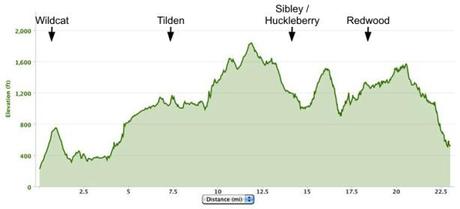
Arrows signify the boundary where each Regional Park/Preserve begins
Standing in the parking lot of the East Bay Waldorf School in El Sobrante, I cycled through my warmup routine to prepare for what I thought of as exploratory trail surgery. The East Bay Waldorf School doubles each spring as the staging area for Brazen Racing’s Wildcat Trail Races, so I decided to start here based on my familiarity with the trails and their immediate access to Wildcat Canyon. Today’s exploratory run would begin at the gates on the left side of the parking lot – the trailhead for the Clark Boas Trail.
And it would begin on a decidedly uphill note, just like the Wildcat Half Marathon. Together the Clark Boas Trail and the intersecting San Pablo Ridge Trail rise ~550ft in just under a mile before cresting briefly, branching onto the Belgum Trail, and heading back downhill roller coaster-style, with sprawling panoramic views of the San Francisco Bay and San Pablo Bay laid out below.
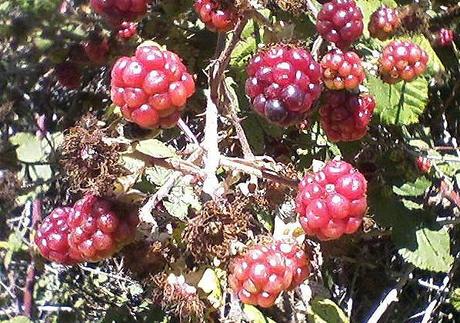
I’d berry-ly started running when I saw these growing along the Belgum Trail in Wildcat Canyon
After less than a mile the Belgum Trail hits a T-shaped dead end at Wildcat Canyon Parkway. Here, due to lack of appropriate signage, I took a brief wrong (i.e. right) turn before quickly realizing my mistake and retracing my steps back down Wildcat Canyon Parkway. Soon Wildcat Canyon Parkway morphs into the indistinguishable Wildcat Canyon Trail and, after running nearly two miles and passing two intersecting branches of the Mezue Trail, I swung a left onto Havey Canyon Trail.
Whereas the course up to this point consisted of well-maintained, widetrack hiking trails, Havey Canyon Trail is a wide singletrack trail that (thankfully) is closed to horseback riders. It also has the distinction, if memory serves, of featuring the only creek crossing – albeit shallow and narrow – along the entire course. After winding uphill through shaded forest for about a mile, Havey Canyon Trail breaks through the trees and briefly persists under open sky before giving way to Nimitz Way.
Depending on the weather, the ~3.5-mile paved stretch along Nimitz Way can represent the most or least enjoyable section of your 32-mile journey. That’s because it’s the most exposed… you’re just as likely to be running into a full-on headwind as you are with the temperate East Bay sun warming your face. But the sweeping vistas on both sides make up for its exposure and slight uphill bent. Nimitz Way ends (or begins, depending on which direction you’re headed) at Inspiration Point in Tilden and is a popular weekend route for hikers and bikers. Out of curiosity, I took a quick detour up Conlon Trail from Nimitz Way and encountered a gang of ~10 wild turkeys, the largest gathering I’ve seen in one place and at one time in the East Bay. I gobbled up the scene and turned back to rejoin Nimitz Way.
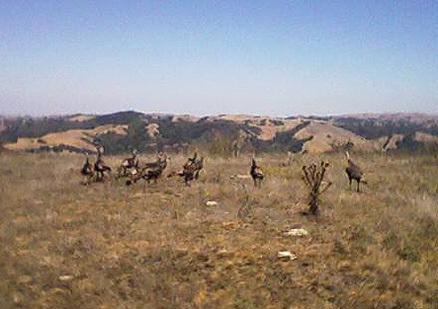
Turkeys! Taken just before I got one step too close and they all fled
Juuuuust before Nimitz Way ends at Wildcat Canyon Road, I veered right onto Meadows Canyon Trail (look for and follow the “Curran Trail” sign off Nimitz Way). After a very short stint on Meadows Canyon, the trail hooks up with the Seaview Trail and abruptly jags upward before crossing Wildcat Canyon Road.
As it turns out, that immediate upward jag is the Seaview Trail’s way of warning the uninitiated. Because while the trail’s name promises scenic views, it doesn’t promise easy access to them. The Seaview Trail is the most intense uphill stretch on this course, particularly if you’re not expecting it immediately after crossing Wildcat Canyon. After climbing ~650ft in just over a mile, the trail takes a brief (< ½-mile) downhill turn before resuming its uphill journey with another ~350ft elevation gain over the next ¾-mile. As I shuffled up the dusty hill, I reflected on the wisdom of the hikers passing me in the opposite direction. But true to its name (and dammit, because I EARNED it) the view on my way up the Seaview Trail was stunning, highlighted by the expansive Bay and the tiny toy skyscrapers of San Francisco in the distance, together with the vivid, almost unnatural green of the Tilden Park Golf Course spread out at my feet. Why is that ant wearing plaid pants and a golfing beret?
After ~3 miles of alternating shaded and unshaded stretches, the Seaview Trail switchbacks downhill to its paved ending at Lomas Contadas and the parking lot of the Tilden Park Steam Trains. Here, at mile 12 of my journey, I took a breather to hit the water fountains, top off my bottle and suck down a PowerBar Gel (which in my unsponsored-but-always-for-sale opinion, is preferable to GU Energy Gel for its thinner consistency). This seemed appropriate, given that one of the wooden benches I’d passed along the Seaview Trail is dedicated to the memory of Brian Maxwell, the founder of Berkeley-based PowerBar.
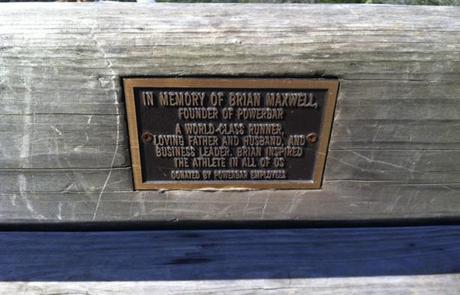
Bench dedicated to PowerBar founder Brian Maxwell, located along the Seaview Trail
(photo credit: Troy and Corina Rahmig)
The course then continues along the overlapping Skyline/Bay Area Ridge Trail, indicated by the Bay Area Ridge Trail’s familiar logo on a sign directly across Lomas Contadas. This changeover can be confusing if you try to map it on the current version of Google Maps, which shows the Bay Area Ridge Trail resuming not directly off Lomas Contadas where the Seaview Trail ends, but rather slightly south and just off Grizzly Peak Blvd, where it seemingly appears out of nowhere (à la Arnold Schwarzenegger in “The Terminator”) and emerges from a dense thicket of trees.
You, on the other hand, should simply follow the Seaview Trail to Lomas Contadas and look for the Bay Area Ridge Trail logo: you’ll see the now-singletrack trail resume its relentless course off into the grasslands and chaparral bordering Grizzly Peak Blvd. You’re back on track! This is where I first began to notice regular use of the Bay Area Ridge Trail logo along the course.
Running roughly parallel to Grizzly Peak for the next 1.5 miles, the trail meanders downhill before passing through a gate and crossing an unlabeled paved road… this is Fish Ranch Road. About 50yds up Fish Ranch Road, the trail clearly resumes at a gate announcing the “Skyline Trail South” and labeled with the Bay Area Ridge Trail Logo. The next two miles through the shaded woods of the Sibley Volcanic Regional Preserve alternate equally between uphill and downhill, gaining 500ft of elevation in the first mile before giving it all back in the second and feeding into the Sibley Staging Area.
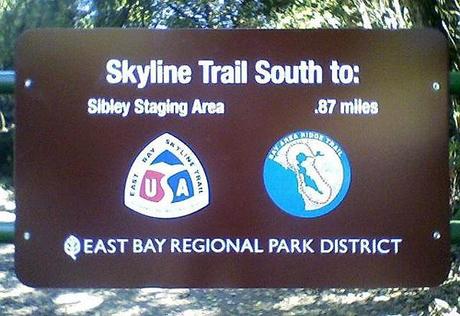
Trailhead sign at Fish Ranch Road… apparently the East Bay RPD measures distance as the crow flies
The trail then makes a pitstop at the Sibley Staging Area, and so did I. Here I took a couple of minutes to get my bearings and refill my bottle at a water fountain. I noticed that the Bay Area Ridge Trail – which begins a few feet from where you just left off – was temporarily closed and featured a large “KNOW YOUR SNAKES” sign clarifying the difference between a gopher snake (pretender; ok to use as a speed bump) and a western rattlesnake (contender; may cause severe tire damage). And I reminded myself that having never yet encountered a rattlesnake on any of my umpteen trail runs, I’m pretty much due at this point.
A “Detour” sign currently directs runners up a side trail immediately to the left of the main trail. Within ¼-mile this side trail rejoins the Skyline/Bay Area Ridge Trail, which a short time later seems to dead-end at a T-shaped intersection with the Round Top Loop Trail. Again, you’ll want to avoid Google Maps for this next step: although the Round Top Loop Trail offers widetrack running options to both your left (Volcanic Trail) and right (return to Sibley Visitor Center), you’ll want to make a quick jag slightly uphill and to your left on Water Tank Road, where you should almost immediately see the Bay Area Ridge Trail logo directing you back into the woods. The Skyline/Bay Area Ridge Trail then promptly crosses the Round Top Loop Trail once again, but don’t be fooled by the wider, hiker-friendly Round Top Loop Trail – your singletrack trail continues through the woods to the right. If you’re still on the Skyline/Bay Area Ridge Trail at this point, then nice job… you’re money and you don’t even know it.
The next two miles through the Huckleberry Botanic Regional Preserve feature plenty of shade, a trail runner’s best friend. Occasional numbered signs (which I quickly realized weren’t distance markers) indicate points of interest along the self-guided tour of the preserve. Within the first mile the trail makes an abrupt uphill switchback to the right; although a “Bay Area Ridge Trail” sign warns of this maneuver, I might have blown right by the turn if I hadn’t been in full tortoise mode. One more mile through Huckleberry and the course opens out into…
Asphalt, in all directions. Fortunately it’s fleeting… at the juncture of three main roads (Skyline Blvd, Pinehurst Road and Shepherd Canyon Road), the trail crosses Pinehurst and immediately jags up the wooded Phillips Loop. After another ~¼-mile Phillips Loop breaks out of the trees, and a sharp right on to the flat, widetrack East Ridge Trail signals your unofficial entrance into Redwood Regional Park.
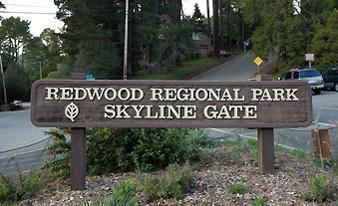
Welcome to Redwood Regional! Now keep running
(photo © Mitch Tobias, reprinted from Oakland Magazine)
The East Ridge Trail – heavily populated by hikers on warm weekends – circles counterclockwise past the Skyline Gate Staging Area parking lot, and forks into its counterpart West Ridge Trail (continuation of the Bay Area Ridge Trail) to your right and the Stream Trail to your left. Veer right and continue on the West Ridge Trail through Redwood Regional for another 4+ miles (notice but ignore the upcoming turnoff for the French Trail, where the Skyline Trail again deviates from the Bay Area Ridge Trail like the unfaithful partner it is). After some gentle uphill work in its first 1.5 miles, the trail passes the Chabot Space and Science Center/Redwood Bowl Staging Area, then flattens out for ~½-mile before beginning its gradual descent toward Chabot Regional, with several offshoot trails en route.
But that meeting for me would have to wait another week… my day was over. Down I followed the West Ridge Trail on one final steep yet short-lived descent to its endpoint intersection with the Bridle Trail (to your left) and Golden Spike Trail (to your right). A sharp right on the Golden Spike Trail then a short jog, and I exited into the Fishway area near the Redwood Gate entrance to Redwood Regional. With day one in the books it was back to life in the “real” world… at least until next weekend.
To be continued…
Be warned: Cell phone service is spotty at best in this section of Redwood Regional… I found this out the hard way once my run was over and I tried to call Katie for a ride home. Oops.
FINAL STATS:
Total distance: 23 miles (including planned and unplanned detours)
Total time: 4:18:02
Average pace: 11:12/mile (miles 2, 3, 4, 8, 9 @ sub-10:00/mile)
Elevation change (Garmin Connect Software): 4,126ft ascent, 3,792ft descent
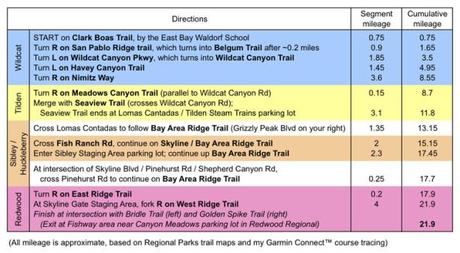
Blow-by-blow directions for day one of my East Bay trail adventure
